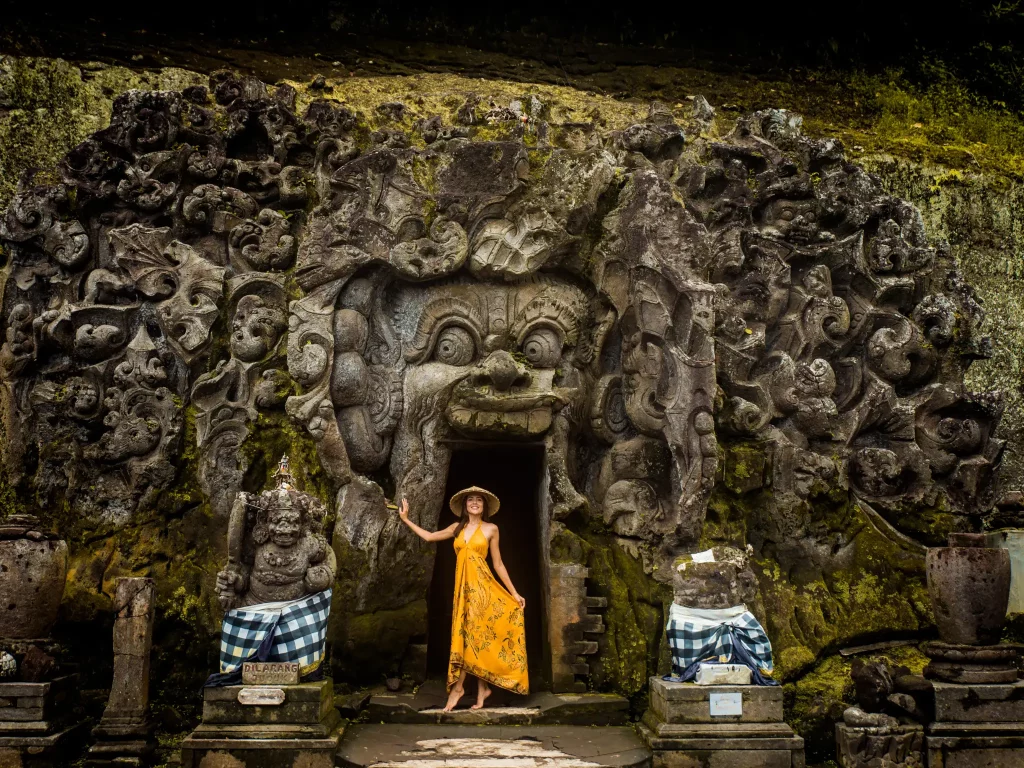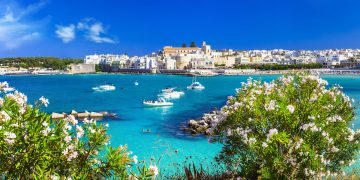If postcards came to life, they’d look a lot like Bali and Santorini. These two far-flung islands, perched in completely different parts of the world, somehow manage to capture everything we dream of when we think of paradise—sun-drenched beaches, hypnotic sunsets, and landscapes so jaw-droppingly beautiful that they almost don’t seem real. But Bali and Santorini aren’t just pretty faces; they’re destinations that captivate with culture, seduce with serenity, and inspire travelers to reach for their cameras—and their souls. This is not about comparing two islands; it’s about celebrating why each has become a global icon for wanderlust.
Introduction: Exploring the Idyllic Beaches, Sunsets, and Landscapes of Bali and Santorini
There’s something undeniably magnetic about the way light touches the earth in Bali and Santorini. In Bali, it filters through palm trees and misty jungles, glinting off the rippling rice terraces that tumble down volcanic hillsides. In Santorini, it bounces off cubic white buildings and dances across the Aegean Sea, turning the entire island into a painter’s dreamscape. These are places where nature collaborates with tradition to compose the kind of beauty that doesn’t just impress—it lingers.
Both islands are famed for their distinctive charms: Bali with its lush tropical energy and deeply spiritual undertones, and Santorini with its Cycladic simplicity and poetic cliffside views. They may lie thousands of kilometers apart, but each offers a complete sensory experience: colors, textures, tastes, and sounds that stay with you long after you’ve left. Whether you’re craving barefoot tranquility or cliff-perched luxury, Bali and Santorini promise more than just visuals—they offer soul-refreshing escape.
Bali’s Beaches and Rice Terraces: The Lush, Serene Landscapes of Bali, Ideal for Relaxation and Exploration
Bali’s terrain reads like a love letter from nature. From the golden sands of Seminyak to the coral-kissed shores of Nusa Dua and the surfer’s haven of Uluwatu, its coastline is as diverse as it is stunning. Here, the beach isn’t just a place to lay out a towel—it’s an experience in itself. Wake up to sunrise yoga in Canggu, take a sunrise boat ride with dolphins in Lovina, or sip a chilled coconut at a bamboo beach club nestled into a cliff. It’s barefoot luxury at its finest.
Venture inland, and you’ll discover Bali’s emerald heart—the rice terraces of Tegallalang and Jatiluwih. These stepped paddies, carved into the hills like green amphitheaters, are masterpieces of ancient agricultural engineering and spiritual reverence. Walking through them isn’t just about Instagrammable backdrops—it’s a way to connect with the island’s rhythm and tradition. Farmers still work these fields using age-old Subak irrigation systems, a practice so integral it’s recognized by UNESCO.
Add to that the spiritual architecture of Ubud’s jungle temples, the volcanic drama of Mount Batur, and the waterfalls that tumble through fern-laced ravines like Sekumpul and Tegenungan, and Bali quickly reveals itself as a destination designed not just for selfies but for awakening the senses. The air smells like frangipani and incense, the food bursts with spice and sweetness, and the people smile with a warmth that’s unforgettable.
Santorini’s Iconic Views: How the Whitewashed Buildings and Blue-Domed Churches Attract Travelers from All Over the World
If Bali is all about immersive abundance, Santorini is about minimalistic perfection. With its sugar-cube houses, bright bougainvillea, and cobalt-domed churches balanced on volcanic cliffs, this Greek island has become the universal shorthand for island beauty. But here’s the secret: even when you’ve seen a thousand photos, nothing prepares you for that first real glimpse of Oia’s skyline at sunset. It’s a silence-inducing moment. The kind that rewires your definition of beauty.
Santorini’s drama doesn’t end with its architecture. The entire island was shaped by a volcanic eruption in the 16th century BC, giving it a rugged caldera that’s as geologically fascinating as it is beautiful. From the clifftop town of Fira, you can gaze down at the volcanic crater filled with impossibly blue water, or take a boat across the caldera to Nea Kameni, where you can hike over lava fields and soak in hot springs.
The island’s beaches offer their own surreal palette—Red Beach with its crimson cliffs, Black Beach (Perissa and Kamari) with its volcanic sand, and even White Beach, accessible only by boat, where alabaster cliffs frame sapphire waves. Unlike tropical shorelines, Santorini’s coastlines feel elemental, shaped by fire and time.
And then there’s the wine. Santorini’s unique soil, sun, and sea winds produce exceptional varietals like Assyrtiko, a crisp white wine that pairs beautifully with grilled octopus, creamy fava, or caper salad. Food here is simple but rich—built on centuries of island resilience and Mediterranean abundance.

Travel Tips: The Best Times to Visit, Where to Stay, and How to Make the Most of Your Trip to Both Destinations
Timing is everything when it comes to Bali and Santorini. For Bali, the sweet spot is during the dry season (April to October) when days are sunny and humid-free. July and August are peak times with crowds and higher prices, so for a more tranquil experience, aim for May, June, or September. For Santorini, late spring (May-June) and early autumn (September) offer the best balance of good weather, fewer tourists, and affordability. The summer months (July–August) are spectacular but sweltering and crowded.
Where to stay in Bali depends on what you’re after. Want nightlife and chic beach clubs? Head to Seminyak. Prefer lush retreats and artisanal markets? Choose Ubud. Dreaming of surf and sea caves? Try Uluwatu. For ultimate seclusion, explore the northern coast or nearby islands like Nusa Penida.
In Santorini, accommodation is part of the experience. The caldera-facing suites in Oia and Imerovigli come with infinity pools that seem to hover above the sea. For a slightly less pricey but equally charming stay, consider Fira or Pyrgos, where the views are expansive, and the crowds thinner. Boutique cave hotels carved into cliffsides offer both luxury and authenticity.
Getting around both destinations requires some planning. Bali is large, and traffic can be unpredictable. Hiring a private driver for day trips is convenient and affordable, especially for reaching inland attractions. Scooter rentals are common but should be approached with caution if you’re unfamiliar with the roads. Santorini is more compact—buses connect major towns, but renting an ATV or car gives you flexibility to explore hidden beaches and clifftop villages.
Don’t miss local experiences in either destination. In Bali, take a traditional Balinese cooking class, attend a Kecak fire dance at Uluwatu Temple, or soak in the sacred springs at Tirta Empul. In Santorini, visit a family-run winery, hike the Fira to Oia trail, and spend an evening dining cliffside as the sun turns the sky from gold to indigo.
Cultural respect matters, too. In Bali, modest dress is appreciated at temples, and offerings placed on the ground should not be stepped over. In Santorini, tourism is welcome, but sustainability is a growing concern—support local artisans, avoid cruise-day overcrowding when possible, and be gentle with the island’s fragile cliff paths.
Conclusion
Bali and Santorini may offer contrasting aesthetics—one is tropical and spiritual, the other sun-baked and surreal—but what binds them is their ability to stir the soul. They don’t just take your breath away visually; they offer environments where time slows, senses sharpen, and emotions rise to the surface. Whether you’re meditating in the highlands of Ubud or sipping Assyrtiko as the Aegean glows orange, these destinations remind us of how powerful beauty can be when it’s intertwined with culture and nature.
So, why are Bali and Santorini the world’s most picturesque getaways? Because they aren’t just destinations to be seen—they’re places to be felt. And once you’ve felt them, no picture will ever quite capture what they’ve left behind in you.





















